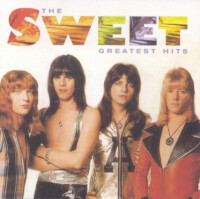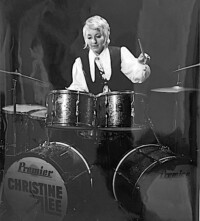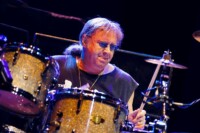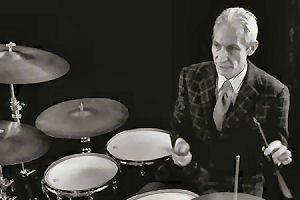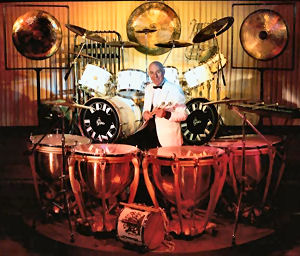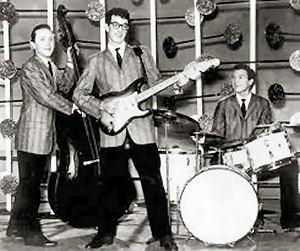 Jerry Ivan Allison was born on 31st August 1939, is known to his friends as JI and in my opinion Rock and Roll drummers owe a bigger debt to him than they probably know. Because of his involvement with Buddy Holly and The Crickets his was the voice of ‘pop’ drumming before we had any idea such a genre existed. There are those who would say he invented it – and I’m most definitely one of them!
Jerry Ivan Allison was born on 31st August 1939, is known to his friends as JI and in my opinion Rock and Roll drummers owe a bigger debt to him than they probably know. Because of his involvement with Buddy Holly and The Crickets his was the voice of ‘pop’ drumming before we had any idea such a genre existed. There are those who would say he invented it – and I’m most definitely one of them!
JI was a proper drummer at a time when we players in Europe were trying to emulate what he was doing – without any real idea how to cope with the nuances. Obviously we could hear what he was doing but mostly without having the knowledge of the rudiments to play it like him – but this didn’t stop us. Even Brian Bennett, who was more schooled than most of us, didn’t play ‘Peggy Sue’ like him. JI uses paradiddles around the toms and we didn’t – we played it with single strokes and, like me, Brian didn’t discover how it should be played until he played on the same bill with The Crickets. However legions of drummers including me, Clem Cattini, Cozy Powell , Bobby Elliott and probably dear ‘old’ Ringo still played it to the best of our ability in our own way (albeit without the lilt). This ability evidently endeared Brian enough to Hank and Bruce for them to offer him a gig with Cliff’s backing group.
(It’s germane to mention that at this time we were all in ‘covers’ bands and playing the rock ‘n’ roll songs we wanted to and perhaps more importantly which people wanted to hear. This was mostly American music including of course songs by Elvis, Buddy Holly, Fats Domino, Little Richard et al; all of whom became JI’s heroes.)
JI, of course, was much closer to the source than we were since these guys all eventually played in the area he lived in and he got to experience them first hand. We were all experiencing these players second-hand mostly through Radio Luxembourg and because there was absolutely none of this music on television (not that many of us were lucky enough to have one) didn’t have any idea how they did it.
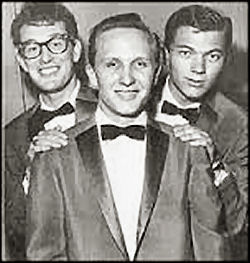 (I once had a memorable gig with Sonny Curtis who played guitar in the Crickets and mentioned how guitarists in the UK struggled to play what he played on the guitar in those great evocative songs. Eventually though, by dint of a lot of really hard work and finger-crunching they managed to get it just about right. These poor guys were really peeved when they discovered Sonny frequently used a capo on his guitar which made the whole thing much, much simpler!)
(I once had a memorable gig with Sonny Curtis who played guitar in the Crickets and mentioned how guitarists in the UK struggled to play what he played on the guitar in those great evocative songs. Eventually though, by dint of a lot of really hard work and finger-crunching they managed to get it just about right. These poor guys were really peeved when they discovered Sonny frequently used a capo on his guitar which made the whole thing much, much simpler!)
‘JI’ himself was completely unaware of his impact on us in the late fifties and of course when I bumped into him every now and again at posh musicians’ watering-holes we talked drums and drumming. Twenty years ago I interviewed him for a film I was making called ‘Crash, Bang, Wallop’ and we debated the subject of his unwitting influence which is on the site if you’re interested.
He went to the same school as Buddy Holly – J.T. Hutchin Junior High – and inspired by Gene Krupa, he started playing drums in his school band in Lubbock, Texas when he was 10 years old. A year later he moved on to private lessons with a guy called Paul Lovitt who was a ‘proper’ music director. Lovitt played all sorts of music including stuff for the ice-capades and was a graduate of Columbia University.
Musically at that time JI told me what was going on in Lubbock wasn’t exactly ‘Western Swing’, it was more Country and Western, but in his lunch breaks Jerry would play Stan Kenton big- band stuff with his friends for which they would be reading the music. He was inspired by Kenton (and therefore Shelly Manne who was in the band at the time) and a lot of his fills into accented passages on later records were based on this drumming style, including a false ending at the end of a Crickets’ hit after Buddy’s death called ‘Someday’.
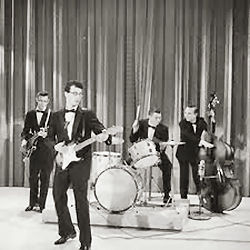 JI was more or less obliged to graduate from Kenton to Country because this was his only way to make money in Lubbock other than packing groceries into paper bags. Lubbock, and everywhere for 100 miles around it was ‘dry’ at the time and he was playing in funky joints for $5 a night. Here people brought their own bootleg booze with them and wanted more of an accentuated ‘backbeat’ to the music which accompanied their drinking. It was sometime in 1954, aged 14 and playing in these dives, that he first played with Buddy Holly who would turn up and ‘sit in’. They’d both heard Bill Haley on the radio and learned ‘Forty Cups Of Coffee’ together. Buddy was seriously into Elvis and since ‘The King’ didn’t want a drummer neither did he! Fortunately DJ Fontana came along to play drums with Elvis so JI Allison didn’t miss the boat and found himself back in the group. Not that it was a group because in those halcyon days it was only him and Buddy – guitar, vocals and drums which explains Buddy’s extraordinarily rhythmical style [This unusual combination of guitar and drums has been resurrected more recently by the White Stripes and goes to show you that nothing is new in music]. JI once had the cheek to ask Elvis why he didn’t have a drummer and the King’s reply was that he didn’t want to sound like Bill Haley!
JI was more or less obliged to graduate from Kenton to Country because this was his only way to make money in Lubbock other than packing groceries into paper bags. Lubbock, and everywhere for 100 miles around it was ‘dry’ at the time and he was playing in funky joints for $5 a night. Here people brought their own bootleg booze with them and wanted more of an accentuated ‘backbeat’ to the music which accompanied their drinking. It was sometime in 1954, aged 14 and playing in these dives, that he first played with Buddy Holly who would turn up and ‘sit in’. They’d both heard Bill Haley on the radio and learned ‘Forty Cups Of Coffee’ together. Buddy was seriously into Elvis and since ‘The King’ didn’t want a drummer neither did he! Fortunately DJ Fontana came along to play drums with Elvis so JI Allison didn’t miss the boat and found himself back in the group. Not that it was a group because in those halcyon days it was only him and Buddy – guitar, vocals and drums which explains Buddy’s extraordinarily rhythmical style [This unusual combination of guitar and drums has been resurrected more recently by the White Stripes and goes to show you that nothing is new in music]. JI once had the cheek to ask Elvis why he didn’t have a drummer and the King’s reply was that he didn’t want to sound like Bill Haley!
JI toured with Elvis but first saw him live at a place called the Cotton Club where he was playing with the ‘Riverside Ranch Hands’ and recalls:
“Elvis would play the Colliseum and in those days most everybody on the show would come out to the club and jam. Elvis was sort of big in town but I’d never seen him. To me he was just another hillbilly! Anyway I was out on the dance floor drinking a beer or something when he started playing ‘Good Rocking Tonight’ and I got goose bumps. Buddy Holly affected me the same way. Man it felt so good to play music with him.”
His mother was a teacher and after he graduated (earlier than most) at sixteen she was perhaps justifiably not too sure about him being a musician. Nevertheless he began to play around Lubbock with Buddy including gigs at the roller skating rink. This roller skate rink is depicted in the film about the Crickets which, like most biopics, nobody who was there at the time has ever been particularly enamoured with. In the film Don Stroud plays Jerry Allison and I’m pretty sure I remember thinking when I saw the film all those years ago that he was using the wrong drum kit!
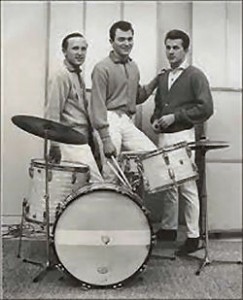 While we’re on the subject, as far as JI’s drums are concerned, guys of a certain age will remember the white Ludwig (Marine Pearl?) kit he used on the Ed Sullivan television show with Buddy Holly when they played Peggy Sue for the first time. However, JI also had a couple of Premier sets. His black Premier was bought in 1956 from Delahunty’s Horn shop in Lubbock immediately after he returned from a two week tour playing with The Two Tunes with Buddy Holly backing, amongst others, George Jones and Wanda Jackson. He was getting $10 a gig and came home with $140, and surprisingly for an American in the middle of the country, spent it on a UK-built Premier set. He really liked them and they were used on the recordings of ‘Peggy Sue’ and ‘That’ll Be The Day’. There was also a grey Premier with two floor toms given to him by Gerald Della Porta when the Crickets toured the UK in 1958 which he used with The Everly Brothers on ‘Till I Kissed You’ and Buddy’s ‘Love’s Made A Fool Of You’. His very first real kit though was a Slingerland with lights in the bass drum and toms and a Hawaiian scene painted on the front head.
While we’re on the subject, as far as JI’s drums are concerned, guys of a certain age will remember the white Ludwig (Marine Pearl?) kit he used on the Ed Sullivan television show with Buddy Holly when they played Peggy Sue for the first time. However, JI also had a couple of Premier sets. His black Premier was bought in 1956 from Delahunty’s Horn shop in Lubbock immediately after he returned from a two week tour playing with The Two Tunes with Buddy Holly backing, amongst others, George Jones and Wanda Jackson. He was getting $10 a gig and came home with $140, and surprisingly for an American in the middle of the country, spent it on a UK-built Premier set. He really liked them and they were used on the recordings of ‘Peggy Sue’ and ‘That’ll Be The Day’. There was also a grey Premier with two floor toms given to him by Gerald Della Porta when the Crickets toured the UK in 1958 which he used with The Everly Brothers on ‘Till I Kissed You’ and Buddy’s ‘Love’s Made A Fool Of You’. His very first real kit though was a Slingerland with lights in the bass drum and toms and a Hawaiian scene painted on the front head.
As far as the other music that influenced him was concerned, the first record he bought was ‘Going To The River’ by Fats Domino which according to JI, “some said was Rock and Roll but couldn’t have been because Alan Freed hadn’t invented the phrase at that time”. All the songs he told me about that they played like ‘Sexy Ways’, ‘Annie Had A Baby’ and ‘Dance With Me Henry’ were shuffle-orientated and I was interested to know when those neo-jazz rhythms were first ‘straightened-out’?
“Not ‘till Little Richard. Lucille was one of my favourites of all time. A guy called Charles Connors played with him in ‘The Girl Can’t Help It’ and I think I saw that movie seven times! “ (Eventually Charles Connors played double drums on Bobby Vee’s version of Lucille with the great Earl Palmer!)
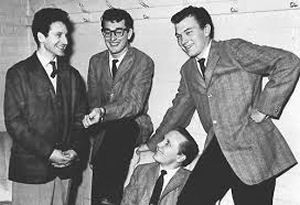 He told me: “We originally did ‘Maybe Baby’ with a swing beat and we were sitting backstage at The Brooklyn Paramount and Dale Hawkins who sung ‘Susie Q’ suggested we played it like Lucille, so we went back and played it with straight eights. That was in ’57 so I don’t believe we played any eights deal before that.”
He told me: “We originally did ‘Maybe Baby’ with a swing beat and we were sitting backstage at The Brooklyn Paramount and Dale Hawkins who sung ‘Susie Q’ suggested we played it like Lucille, so we went back and played it with straight eights. That was in ’57 so I don’t believe we played any eights deal before that.”
They started out without a bass player because nobody else in the vicinity was into their music but eventually they found somebody who was. The Holly/Allison duo found a stand-up ‘steam’ bass player called Joe Mauldin and they started to make records. They went to Clovis, New Mexico to record with a chap called Norman Petty who was allegedly something of a Svengali and (not quite so allegedly) economical with the truth as far as intellectual property and ownership of the songs was concerned. That said, he made a wonderful job of harnessing their musical ability.
Interestingly there were several songs where Petty made it possible for JI not to have to play any drums at all. On ‘Well Alright’ he plays a double tempo ‘ten to two’ rhythm while the cymbal is lying flat on the floor and on ‘Everyday’ he simply played the ‘one & two & three & four &’ rhythm on his knees complete with a triplet fill. There was evidently even a cardboard box involved in ‘Not Fade Away’.
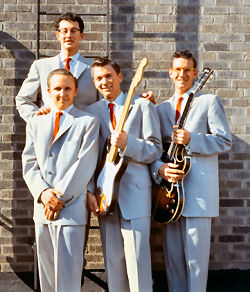 I don’t expect he ever had to play a drum solo in his life but I’m sure he could have even though he didn’t need to. He was writing seminal songs, like ‘That’ll Be The Day’, ‘Peggy Sue’ and ‘Not Fade Away’ with Buddy Holly, and with various others of the Crickets songs like ‘Love You More Than I Can Say’ – with Sonny Curtis. He’s the only original member who went through all the incarnations without a break.
I don’t expect he ever had to play a drum solo in his life but I’m sure he could have even though he didn’t need to. He was writing seminal songs, like ‘That’ll Be The Day’, ‘Peggy Sue’ and ‘Not Fade Away’ with Buddy Holly, and with various others of the Crickets songs like ‘Love You More Than I Can Say’ – with Sonny Curtis. He’s the only original member who went through all the incarnations without a break.
Last time we talked JI was a farmer with a hundred and ninety acres to nurture so had completely different things to attend to in his life.
“When I lived in LA I’d stay up all night and sleep all day like a rock star, now I’m outside of Nashville and I go to bed at ten and get up at six to work the farm.”
His unofficial (and incomplete) discography outside of Buddy Holly and The Crickets extends to Eddie Cochran, Conway Twitty, The Everlys and Bobby Vee.
So what do I think you should listen to for the essence of Jerry Ivan Allison? Well obviously ‘Peggy Sue’ (watch Buddy Holly on the Ed Sullivan show and try to play it yourself with sixteenth note paradiddles over two bars – snare drum to mounted tom, back to snare drum and spice it up by moving over to the floor tom from time to time); ‘That’ll Be The Day’ (listen to the minim triplets on the chorus); ‘Love You More Than I Can Say’; and don’t miss the explosive rock-a-shake rhythm and minim triplets on the Crickets original version of ‘He Fought The Law’. ‘Till I kissed You’ by the Everly Brothers is worth a listen as well as ‘Not Fade Away’ with a disguised ‘Hambone’ rhythm played on that unnamed cardboard box. It was eventually covered by the Rolling Stones and became their first US single.
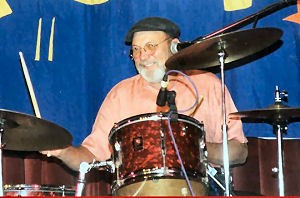 As Don McLean sang on ‘American Pie’ arguably February 3rd 1959 was “The day the music died” but it didn’t stop JI or the rest of the Crickets who were determined to keep it alive. There was a time not so long ago when they were on the road doing a hundred and fifty gigs a year in short stints. This was, he told me, as much as they could manage. “We couldn’t book a month’s tour if we wanted to. We’d need to have someone to look after the animals!”
As Don McLean sang on ‘American Pie’ arguably February 3rd 1959 was “The day the music died” but it didn’t stop JI or the rest of the Crickets who were determined to keep it alive. There was a time not so long ago when they were on the road doing a hundred and fifty gigs a year in short stints. This was, he told me, as much as they could manage. “We couldn’t book a month’s tour if we wanted to. We’d need to have someone to look after the animals!”
Several famous musicians have had their houses preserved but the one JI grew up in where he and Buddy wrote ‘That’ll Be The Day’, was uprooted entirely in 2013 and put on a low-loader before being re-sited at the Buddy Holly Museum on Cricket’s Avenue in Lubbock. How cool is that?
JI is still getting up early to work on the farm and even as I write this I’m told he’s making hay and the sun is shining!
Bob Henrit
July 2014

